|
ANDREA MANTEGNA - ADORATION OF THE SHEPHERDS
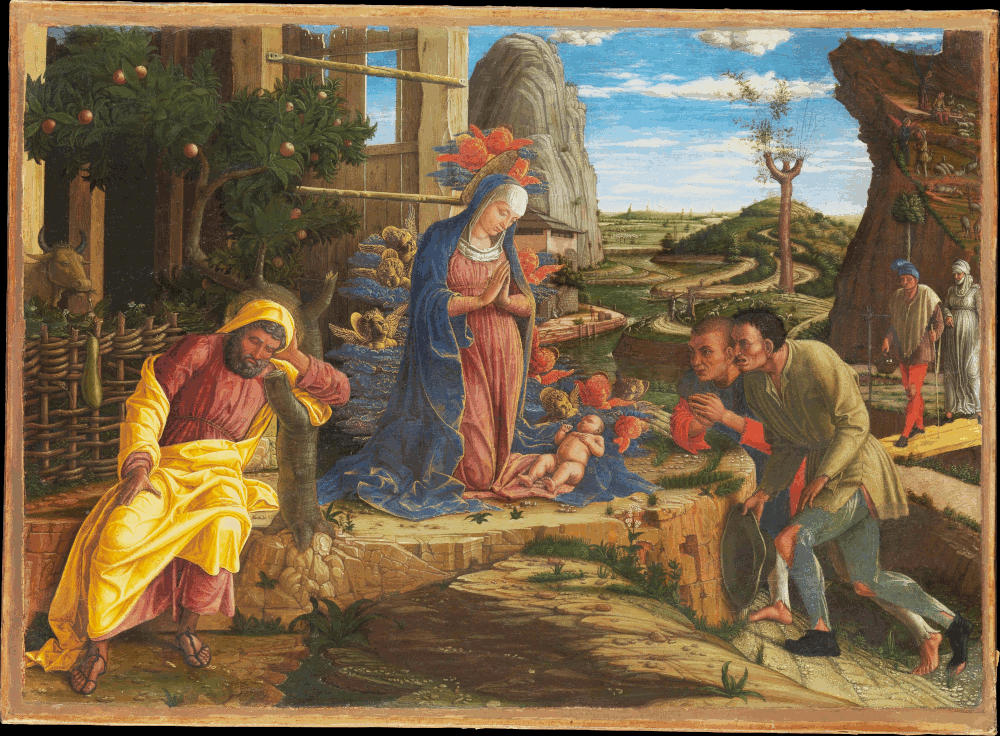
Andrea Mantegna,
Public domain, via
Wikimedia Commons
1451–1453 |
- The Adoration of the Shepherds was a common
religious theme and there were many artists who depicted this
subject, including Andrea Mantegna (1431-1506).
- The scene is very commonly combined with the
Adoration of the Magi, another extremely popular
Christian theme, which makes for a balanced composition.
|
One of the pre-eminent figures of the Italian Renaissance, Andrea Mantegna’s enduring admiration for the art and culture of antiquity is evident in his emphasis on accurate proportion when depicting the figure. (artsy.net)
|
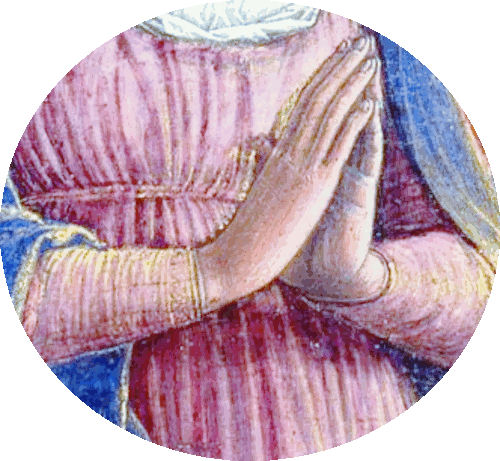
Virgin Mary |
- The adoration of the shepherds was never treated as a separate theme in the East and it was not until the 15th century that it was depicted in the West.
- Tempera on canvas, transferred from wood.
- Metropolitan Museum of Art in New York.
|
Because of the simple piety illustrated by the event, the adoration of the shepherds was a popular subject for altarpieces and other devotional paintings in both the Northern and the Italian schools in the Renaissance and Baroque periods. (Britannica)
|

Summoned by an angel |
-
The painting depicts a scene from the Gospel of Luke and follows from the annunciation to the shepherds, in which the shepherds are summoned by an angel, to the scene of
Christ's birth.
- Shepherds are watching their flocks by night, apparently near Bethlehem, when an angel appears to announce the good news.
|
The painting may have been commissioned by Borso d’Este, the duke of Ferrara. Its style seems to be a response to the vogue for Netherlandish painting in Ferrara. (metmuseum.org)
|
|
Luke 2 |
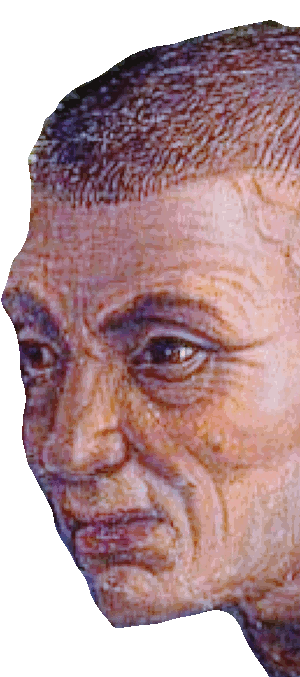
Caesar Augustus |
- In those days Caesar Augustus issued a decree that a census should be taken of the entire Roman world.
- This was the first census that took place while Quirinius was governor of Syria.
- And everyone went to their own town to register.
|
Mantegna depicted the Virgin Mary and Christ Child as a portal between the natural world and the divine: the Virgin’s blue and gold robes extend into clouds filled with cherubs who swirl around the newborn. (metmuseum.org)
|
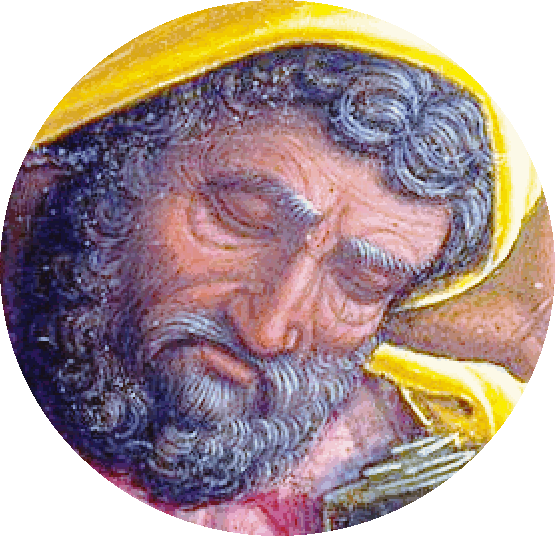 |
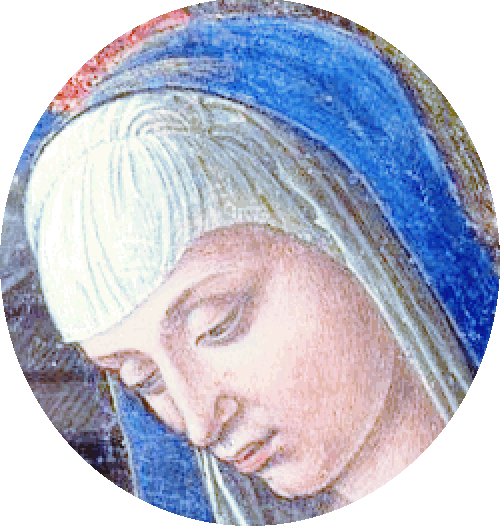 |
|
Joseph |
Mary |
- So Joseph also went up from the town of Nazareth in Galilee to Judea, to Bethlehem the town of David, because he belonged to the house and line of David.
- He went there to register with Mary, who was pledged to be married to him and was expecting a child.
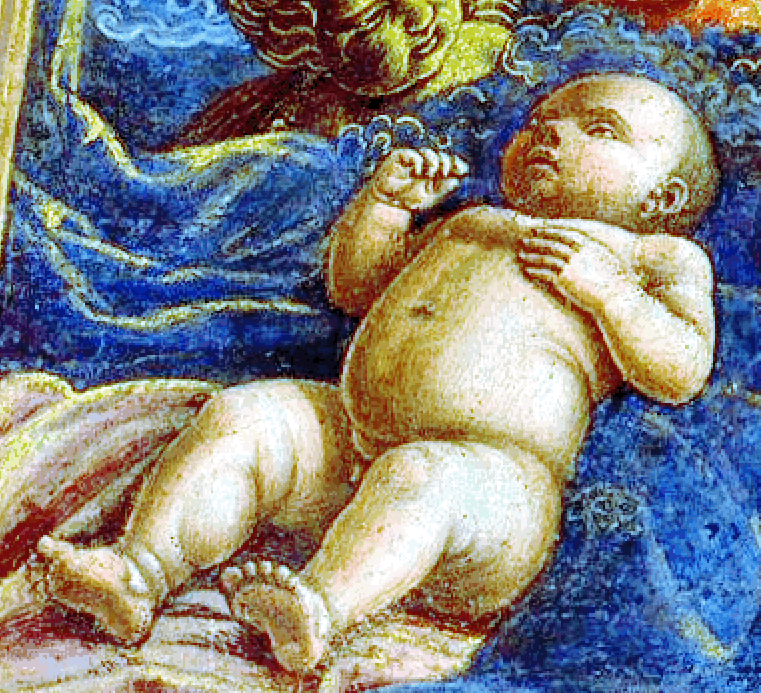
Christ's birth |
- While they were there, the time came for the baby to be born, and she gave birth to her firstborn, a son.
- She wrapped him in cloths and placed him in a manger, because there was no guest room available for them.
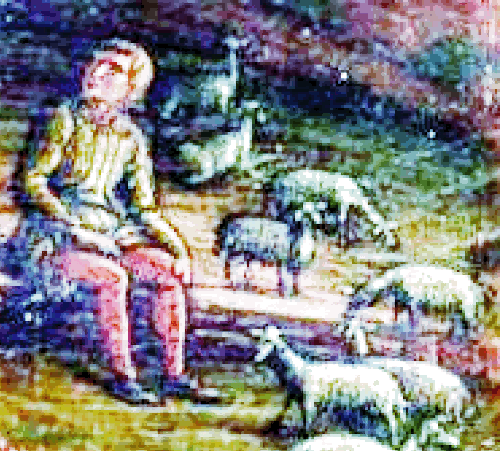
Shepherds are witnesses |
-
In it shepherds are near witnesses to Christ's birth in
Bethlehem, arriving soon after he is actually born.
- The shepherds were depicted in such scenes because, as the first local people to worship Christ, they symbolize the spreading of Christianity among Jewish people.
- This
story precedes the Magi, the Gentiles, arriving in the adoration story.
|
And there were shepherds living out in the fields nearby, keeping watch over their flocks at night. An angel of the Lord appeared to them, and the glory of the Lord shone around them, and they were terrified. But the angel said to them, “Do not be afraid. I bring you good news that will cause great joy for all the people.
Today in the town of David a Savior has been born to
you; he is the Messiah, the Lord. This will be a sign
to you: You will find a baby wrapped in cloths and
lying in a manger.” (Luke 2:8-12)
|
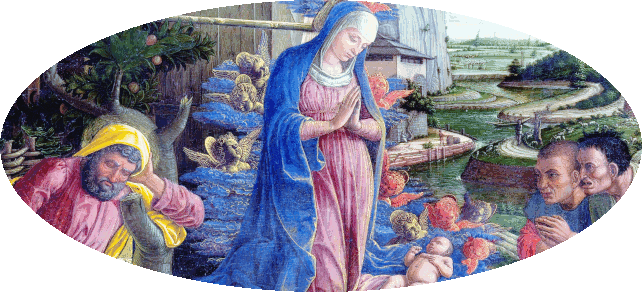
Triangle |
- The scene is set in an open space, with the Madonna in the middle, adoring the Child while kneeling on a stony area within a crumbling wall
- To her right Joseph is sleeping, and to her left two shepherds pray.
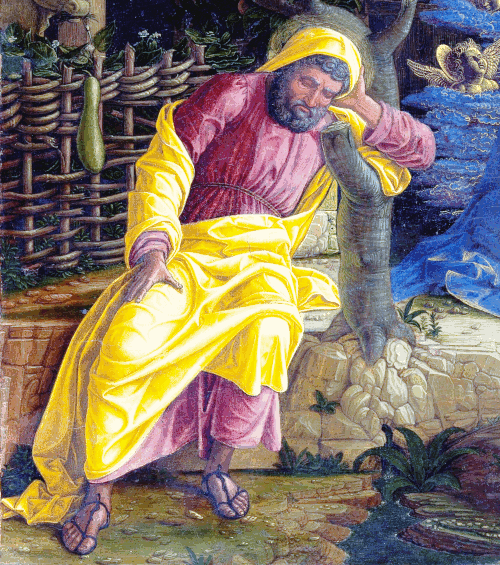
Joseph |
- Joseph's sleep shows his role as mere guardian of the Virgin and the Child.
|
The blasted tree on which he leans has born fruit on a single branch; the usual interpretation of this traditional feature is of the mystic renewal of Nature under the new dispensation. Jesus' three-quarters depiction is typical of Mantegna's production. (Wikipedia)
|
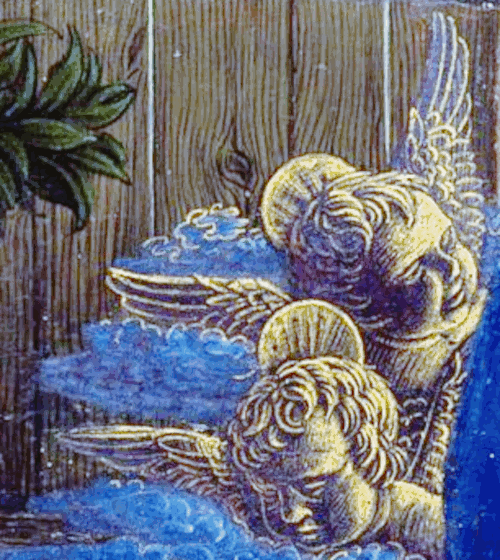
Cherubs |
- Twelve cherubs, borne on a cloud, surround the Virgin and cradle the Child.
|
Suddenly a great company of the heavenly host appeared with the angel, praising God and saying,
“Glory to God in the highest heaven,
and on earth peace to those on whom his favor rests.” (Luke 2:13-14)
|
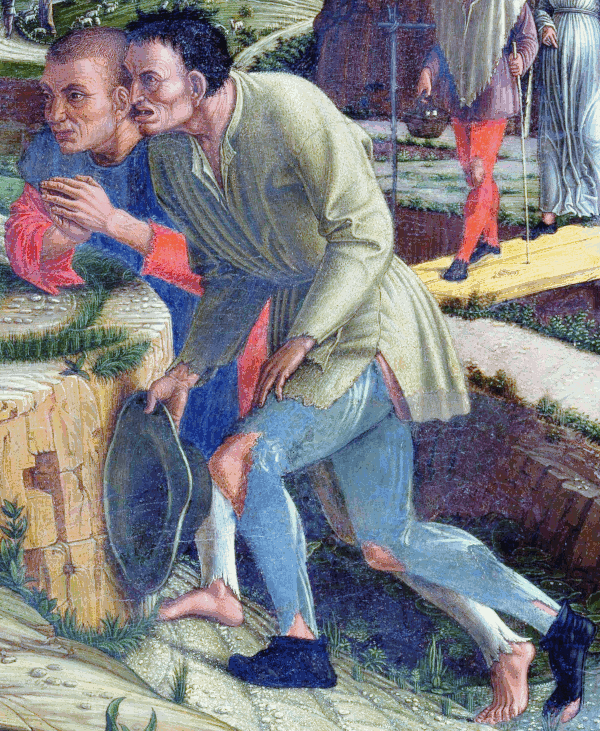
Shepherds arriving |
- In clothing tattered from years of labor, a group of shepherds arrives to witness the newborn Christ Child.
- The shepherds are sometimes shown presenting simpler gifts to Jesus than those of the Magi, such as lambs.
|
When the angels had left them and gone into heaven, the shepherds said to one another, “Let’s go to Bethlehem and see this thing that has happened, which
the Lord has told us about.” (Luke 2:15)
|
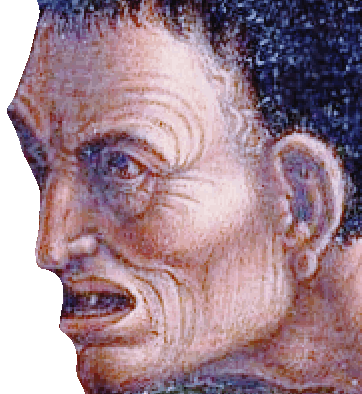
Shepherd |
- The shepherd's are hard-working and it's apparent that
they've have had lived hard lives.
|
The grotesque portraits of the shepherds, such as their wrinkles and other realistic details, show the influence of northern European examples. (Wikipedia)
|
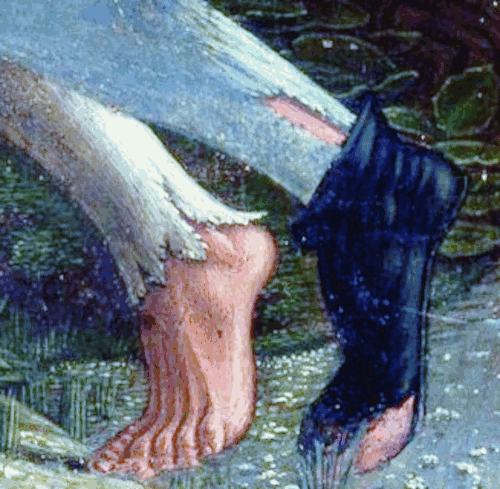
Shepherd hurried off |
-
So they hurried off and found Mary and Joseph, and the baby, who was lying in the manger.
- When they had seen him, they spread the word concerning what had been told them about this child, and all who heard it were amazed at what the shepherds said to them.
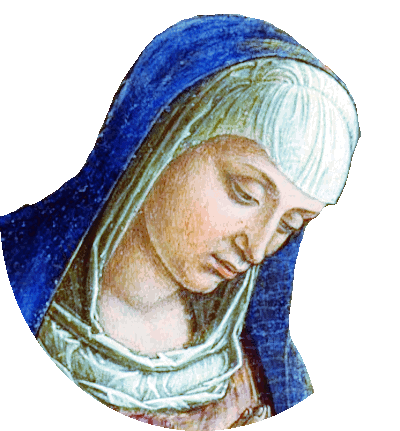
Proud
Mary |
- But Mary treasured up all these things and pondered them in her heart.
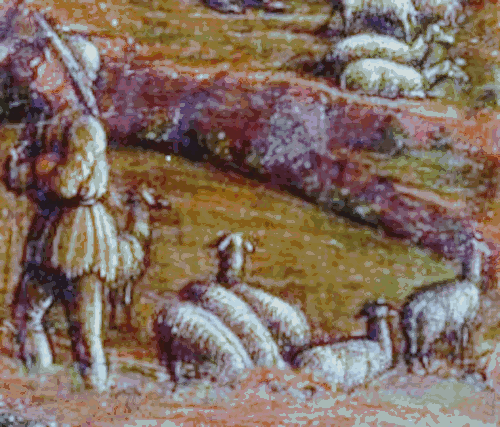
Shepherds returned |
- The shepherds returned, glorifying and praising God for all the things they had heard and seen, which were just as they had been told.
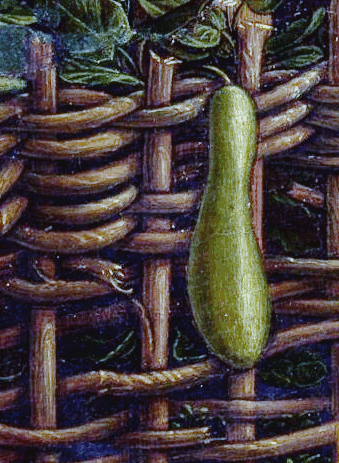
Wattle fence |
-
The prominent gourd hanging on the wattle fence is a Christian symbol representing the Resurrection and also referring to pilgrimage.
|
On the eighth day, when it was time to circumcise the child, he was named Jesus, the name the angel had given him before he was conceived. (Luke 2:21)
|
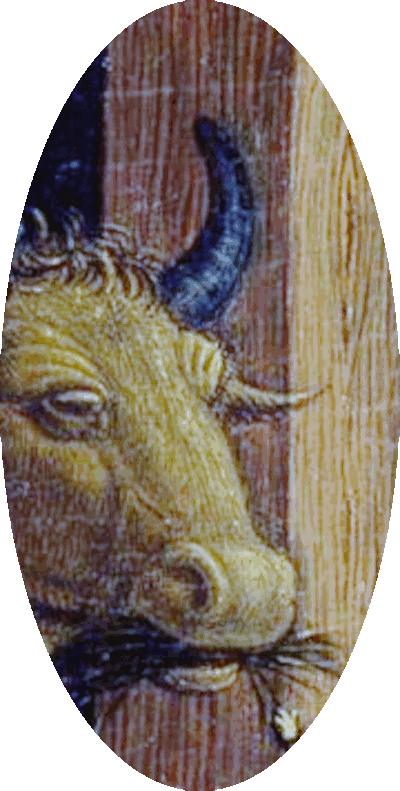
Wattle fence |
- There is also an ox, a traditional witness of the Nativity
who provides comfort to the family.
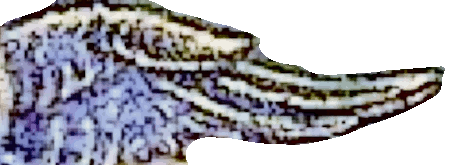
Dove wing |
-
When the time came for the purification rites required by the Law of Moses, Joseph and Mary took him to Jerusalem to present him to the Lord (as it is written in the Law of the Lord, “Every firstborn male is to be consecrated to the Lord”), and to offer a sacrifice in keeping with what is said in the Law of the Lord: “a pair of doves or two young pigeons.”
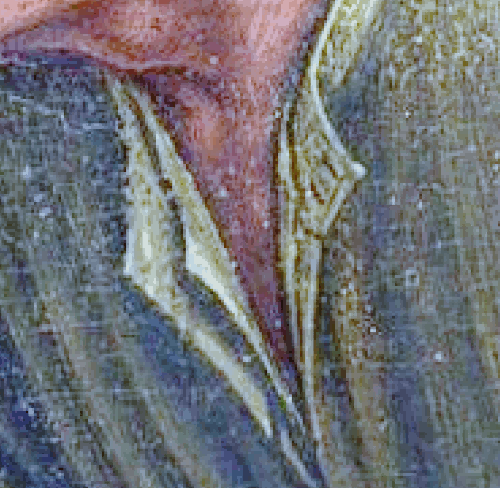
Simeon |
- Now there was a man in Jerusalem called Simeon, who was righteous and devout.
- He was waiting for the consolation of Israel, and the Holy Spirit was on him.
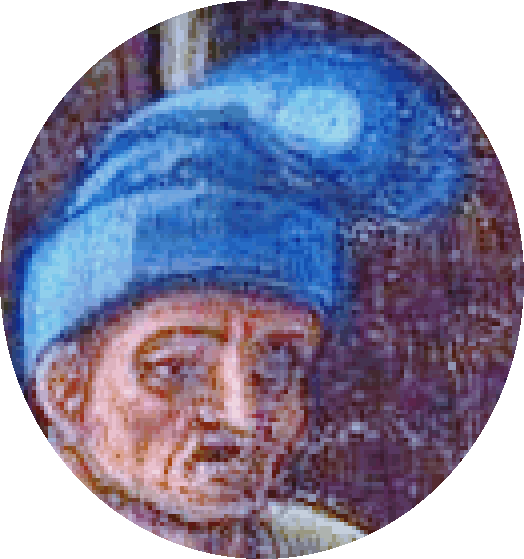
Simeon liberty cap |
- It had been revealed to him by the Holy Spirit that he would not die before he had seen the Lord’s Messiah.
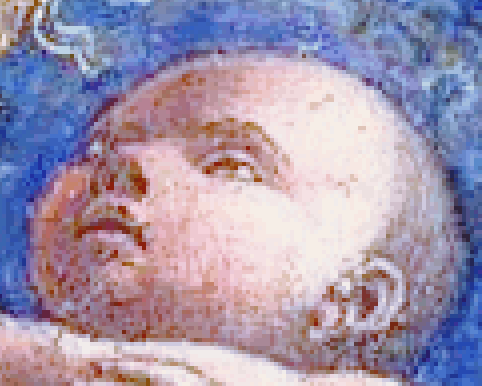
Child Jesus |
- Moved by the Spirit, he went into the temple courts.
- When the parents brought in the child Jesus to do for him
what the custom of the Law required.
|
Simeon took him in his arms and praised God, saying: “Sovereign Lord, as you have promised, you may now dismiss your servant in peace. For my eyes have seen your salvation, which you have prepared in the sight of all nations: a light for revelation to the Gentiles, and the glory of your people Israel.” (Luke 2:28-32)
|
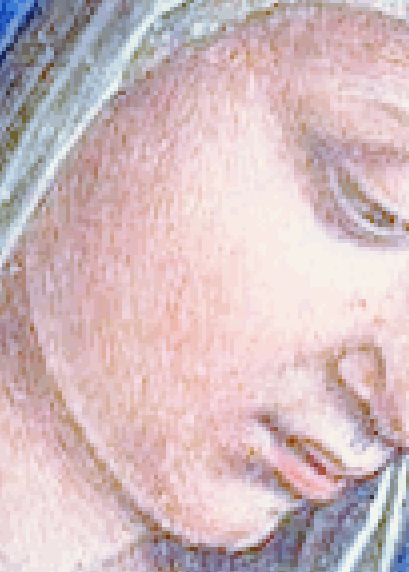
Mother |
- The child’s father and mother marveled at what was said about him.
- Then Simeon blessed them and said to Mary, his mother: “This child is destined to cause the falling and rising of many in Israel, and to be a sign that will be spoken against, so that the thoughts of many hearts will be revealed.
- And a sword will pierce your own soul too.”
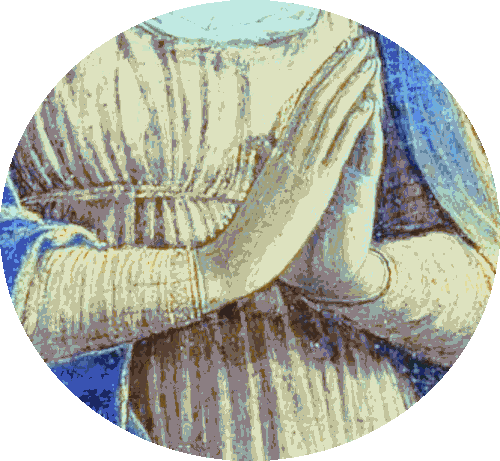
Anna of the tribe of Asher |
- There was also a prophet, Anna, the daughter of Penuel, of the tribe of Asher.
- She was very old; she had lived with her husband seven years after her marriage,
and then was a widow until she was eighty-four.
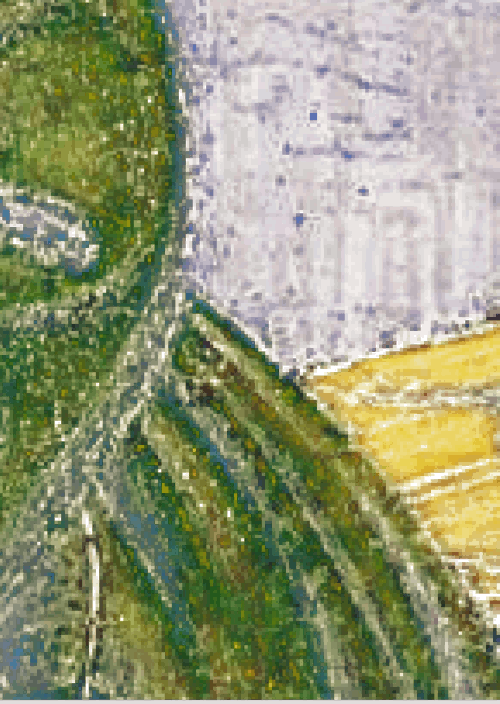
Anna veiled |
- She never left the temple but worshiped night and day, fasting and praying.
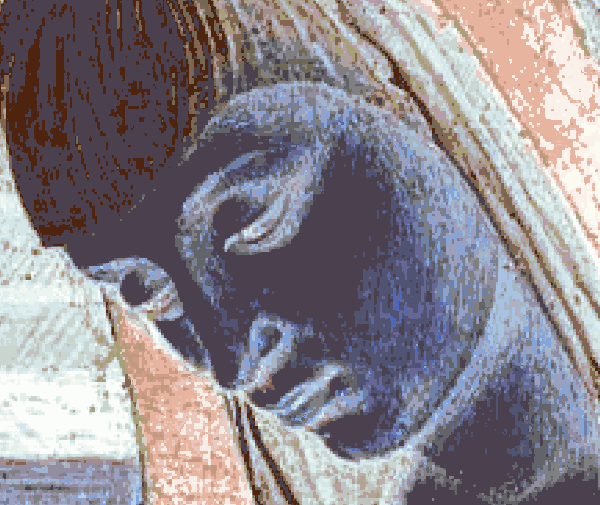
Anna |
- Coming up to them at that very moment, she gave thanks to God and spoke about the child to all who were looking forward to the redemption of Jerusalem.
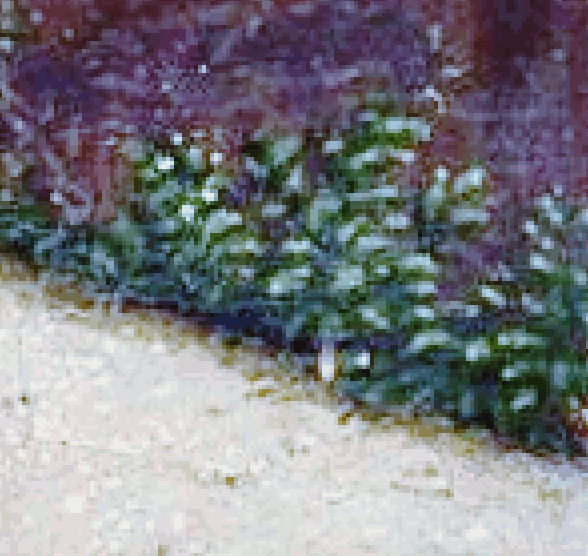
Galilee |
- When Joseph and Mary had done everything required by the Law of the Lord, they returned to Galilee to their own town of Nazareth.
- And the child grew and became strong; he was filled with wisdom, and the grace of God was on him.
|
The Boy Jesus at the Temple |
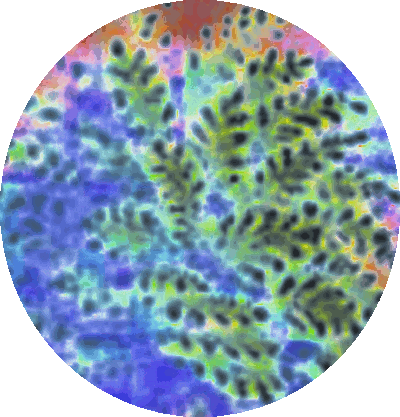
Festival of the Passover |
- Every year Jesus’ parents went to Jerusalem for the Festival of the Passover.
- When he was twelve years old, they went up to the festival, according to the custom.
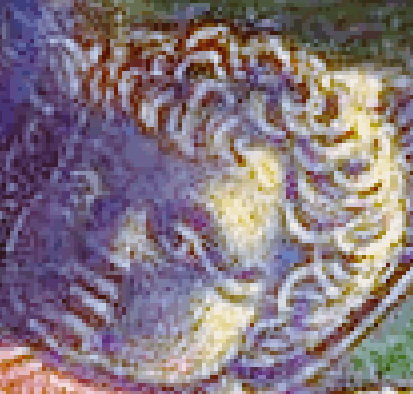
Little imp |
- After the festival was over, while his parents were returning home, the boy Jesus stayed behind in Jerusalem, but they were unaware of it.
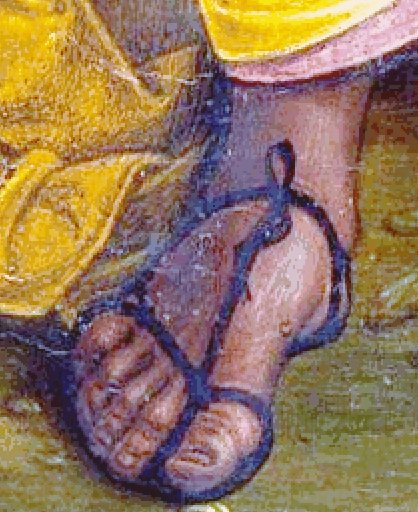
Traveled on for a day |
- Thinking he was in their company, they traveled on for a day.
- Then they began looking for him among their relatives and friends.
- When they did not find him, they went back to Jerusalem to look for him.
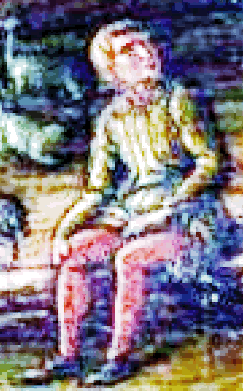
Sitting in the temple courts |
- After three days they found him in the temple courts, sitting among the teachers, listening to them and asking them questions.
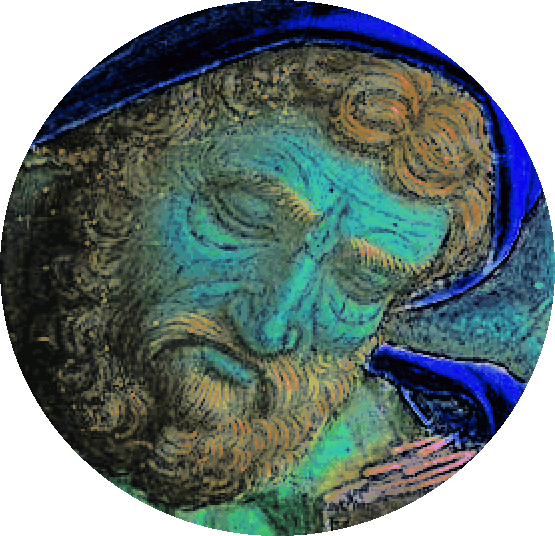
Joseph is anxious |
- Everyone who heard him was amazed at his understanding and his answers.
- When his parents saw him, they were astonished. His mother said to him, “Son, why have you treated us like this?
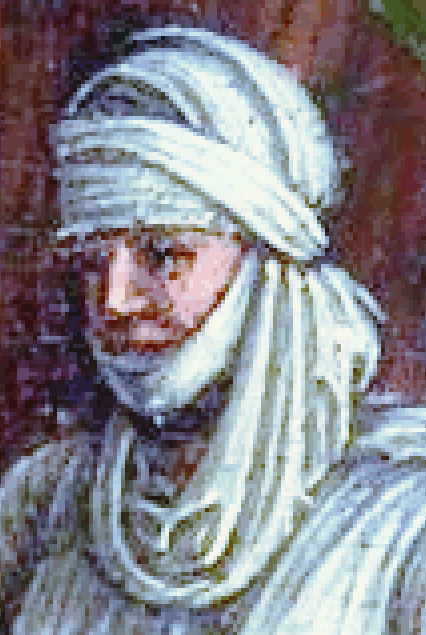
Mary is traumatized |
- Your father and I have been anxiously searching for you.”
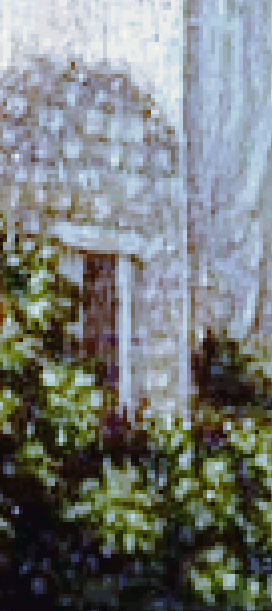
Father’s house |
- “Why were you searching for me?” he asked. “Didn’t you know I had to be in my Father’s house?”
- But they did not understand what he was saying to them.
- Then he went down to Nazareth with them and was obedient to them.

Father’s mansion |
- But his mother treasured all these things in her heart.
- And Jesus grew in wisdom and stature, and in favor with God and man.
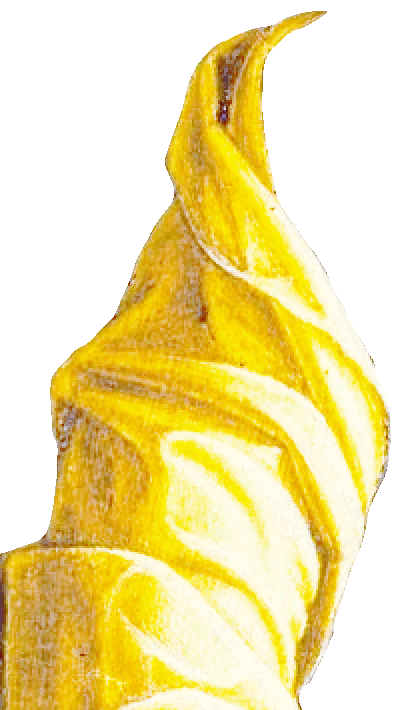
Exaggerated degree |
- Mantegna’s style is further characterized by his unusual compositional choices, often incorporating perspective and foreshortening to an exaggerated degree.
- Plus it appears some knowledge about current history.
|
Mantegna was influenced by fellow Italian artists Filippo Lippi, Paolo Uccello, and, most significantly, Donatello, who worked in Padua for a period, which allowed Mantegna to see the master sculptor’s work in person. (artsy.net)
|
|
|

